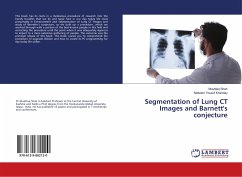The goal of clinical computed tomography (CT) is to produce images of diagnostic quality using the lowest possible radiation exposure. Degradation of image quality, with increased image noise and reduced spatial resolution, is a major limitation for radiation dose reduction in (CT). This can be counteracted with new post-processing image filters and iterative reconstruction (IR) algorithms that improve image quality and allow for reduced radiation doses. Implementation of new methods in clinical routine requires prior validation in phantoms and clinical feasibility studies including comprehensive evaluation of diagnostic image quality. The main objectives of this study were to compromise between radiation dose and image quality in brain (CT) scan at different (mAs) by using(MATLAB) software for evaluation of image quality, a total of 54 human subjects from Abu Salem Trauma Hospital were included in the clinical studies. In conclusion, all evaluated methods improved image quality and showed potential for radiation dose reduction while maintaining diagnostic quality. Careful study design and comprehensive evaluation of image quality including objective and subjective.








